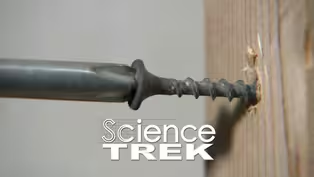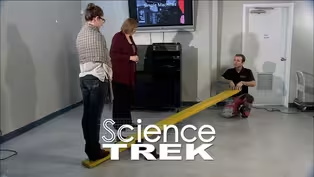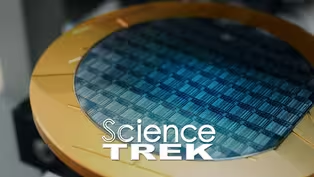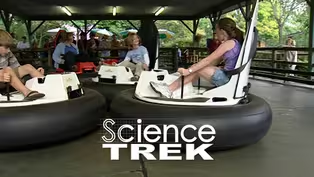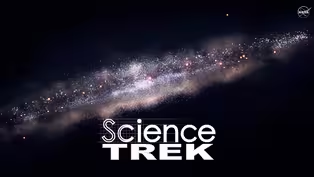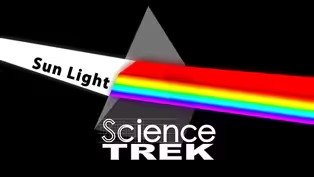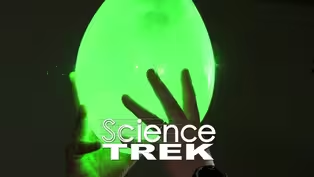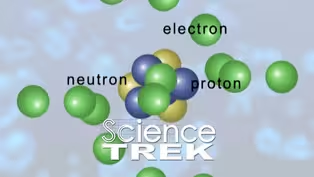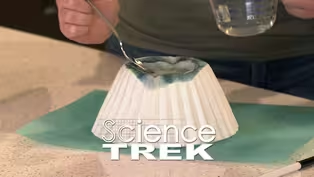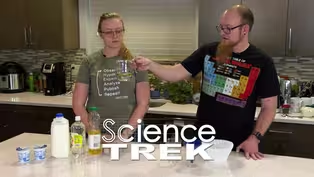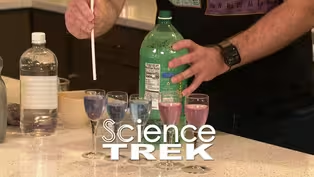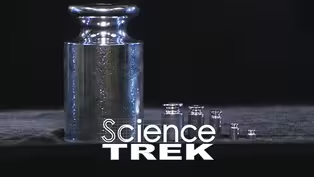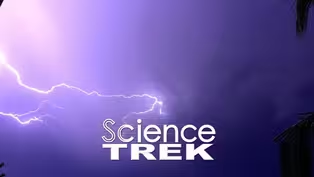
States of Matter: What’s the State of Things?
Special | 4m 22sVideo has Closed Captions
What are the states of matter?
Matter is all around us. Everything that has weight and takes up space is matter. Matter exists mostly in four basic states: solid, liquid, gas, and plasma. And it all has to do with atoms.
Problems playing video? | Closed Captioning Feedback
Problems playing video? | Closed Captioning Feedback
Science Trek is a local public television program presented by IdahoPTV
Major Funding by the Laura Moore Cunningham Foundation and the Idaho National Laboratory. Additional Funding by the Friends of Idaho Public Television and the Corporation for Public Broadcasting.

States of Matter: What’s the State of Things?
Special | 4m 22sVideo has Closed Captions
Matter is all around us. Everything that has weight and takes up space is matter. Matter exists mostly in four basic states: solid, liquid, gas, and plasma. And it all has to do with atoms.
Problems playing video? | Closed Captioning Feedback
How to Watch Science Trek
Science Trek is available to stream on pbs.org and the free PBS App, available on iPhone, Apple TV, Android TV, Android smartphones, Amazon Fire TV, Amazon Fire Tablet, Roku, Samsung Smart TV, and Vizio.
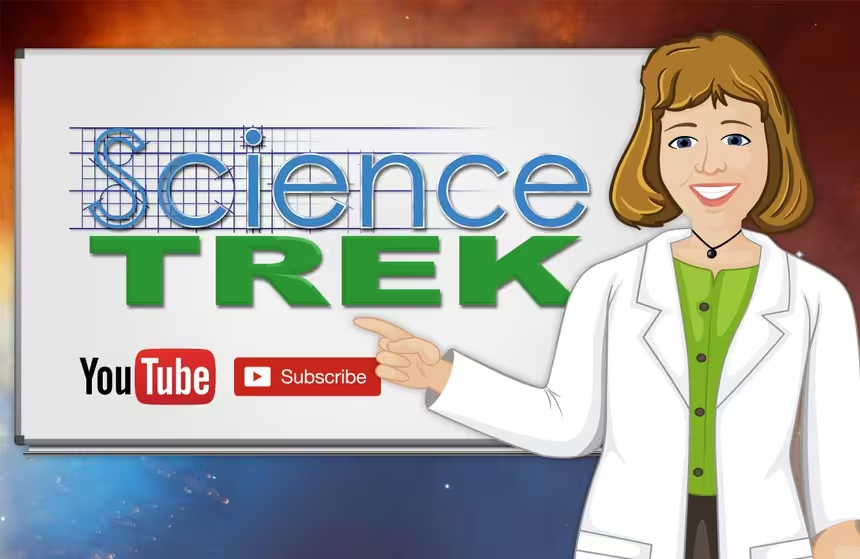
Science Trek
Science Trek is a place where parents, kids, and educators can watch short, educational videos on a variety of science topics. Every Monday Science Trek releases a new video that introduces children to math, science, technology, engineering, and math (STEM) career potentials in a fun, informative way.More from This Collection
Learning the rules is a fundamental part of playing a game. The same is true of understanding science. We need to know the basics of how things operate to begin to understand the world around us. From simple machines to states of matter, science fundamentals give us a good understanding upon which we can build. Start with the basics. Start with Science Fundamentals.
Simple Experiments with Simple Machines
Video has Closed Captions
Experiment with simple machines. (5m 32s)
States of Matter: Rethinking Chips
Video has Closed Captions
How do scientists use the states of matter to create new inventions? (5m 27s)
Force and Motion: Force Makes the World Move
Video has Closed Captions
Find out more about Sir Isaac Newton’s laws of force and motion at the amusement park, Silverwood. (4m 7s)
Force and Motion: Force and Motion Rule!
Video has Closed Captions
Scientists need to understand the laws of Force and Motion to travel in space. Why? (6m 10s)
Light and Color: Hidden in Plain Light
Video has Closed Captions
Color is determined by a wavelength, your eyes, and your brain. (4m 39s)
Light and Color: Use Color to Pop a Balloon
Video has Closed Captions
Can you use a laser to pop some balloons and not others? (4m 15s)
Chemistry: Do Try This at Home
Video has Closed Captions
Learn how to test items at home to see if they are a base or an acid. (7m 16s)
Providing Support for PBS.org
Learn Moreabout PBS online sponsorshipJOAN CARTAN-HANSEN, HOST: Scientists care about the state of matter so they can explain why things happen or how to develop new materials.
But what exactly are the states of matter?
[MUSIC] CARTAN-HANSEN: Anything that takes up space and has weight is called "matter."
STUDENT: When we say anything, we really mean it.
STUDENT: Your favorite food is matter.
STUDENT: Your bike is matter.
STUDENT: Even your school is loaded with matter.
CARTAN-HANSEN: Matter can be as small as the tiniest cell in your skin or as large as the whole galaxy.
Matter is made of atoms.
Matter has mass or weight.
Matter can also change from one form to another.
The study of matter and the changes it goes through is called "physics."
Matter comes in four basic states or phases; a solid, a liquid, a gas or plasma.
There are other forms of matter; for example, one called Bose-Einstein condensates, but these exotic forms of matter exist only in laboratories and aren't found naturally on Earth.
So, let's first talk about solids.
STUDENT: Solids happen when the atoms of matter are densely packed.
CARTAN-HANSEN: Just look around your house.
Can you spot a solid, something that won't change its shape when you touch it?
Your bike or a computer are both good examples of a solid.
STUDENT: How about the next state, liquid?
Water, milk and juice are all good examples.
CARTAN-HANSEN: In a liquid, the atoms aren't as closely packed and the matter takes on the shape of what's around it, like water in a glass.
Next, there are gasses.
The atoms in gasses are spread out and bouncy.
STUDENT: Gasses are usually invisible and have no shape.
Unlike a liquid, you cannot spill it.
And unlike a solid, you cannot touch it.
CARTAN-HANSEN: A gas like air is easiest to see when we fill up a balloon or watch the wind blow.
And then there's plasma.
STUDENT: It can be kind of tricky to spot.
If there's a fluorescent light in your house.
If there is, then you've found plasma.
The light it makes is a glowing plasma.
CARTAN-HANSEN: You also see plasma when you look at the stars.
Stars are big balls of gasses at really high temperatures, and high temperatures charge up the atoms and create plasma.
Temperature is one of those physical forces that can change matter from one form or phase to another.
By changing the temperature, either hot or cold, you have added or subtracted energy.
You've made a physical change in the matter.
But even if the matter takes a different form, its chemical makeup doesn't change.
STUDENT: Take water, for instance.
It's made of two hydrogen, one oxygen, and if you heat it, it turns to steam.
If you freeze it, it turns to ice, but what doesn't change is what it's made of.
It's still water.
CARTAN-HANSEN: The physical state of matter, whether it's a solid, a liquid, a gas or plasma, is a description of the state of its atoms.
Matter is large and matter is small.
It has mass or weight, and it can change its form.
STUDENT: It's basically, all the stuff around you, no matter its state.
CARTAN-HANSEN: If you want to learn more about the states of matter, check out the Science Trek website.
You'll find it at science trek dot org.
[MUSIC] ANNOUNCER: Presentation of Science Trek on Idaho Public Television is made possible through the generous support of the Laura Moore Cunningham Foundation, committed to fulfilling the Moore and Bettis family legacy of building the great state of Idaho.
By the Idaho National Laboratory, mentoring talent and finding solutions for energy and security challenges, by the Friends of Idaho Public Television and the Corporation for Public Broadcasting.
States of Matter: What’s a Phase Change?
Video has Closed Captions
Clip: Special | 1m 4s | What is a phase change? (1m 4s)
States of Matter: The Fourth State
Video has Closed Captions
Clip: Special | 1m 4s | How is plasma used on Earth? (1m 4s)
Providing Support for PBS.org
Learn Moreabout PBS online sponsorship
- Science and Nature

Explore scientific discoveries on television's most acclaimed science documentary series.

- Science and Nature

Capturing the splendor of the natural world, from the African plains to the Antarctic ice.












Support for PBS provided by:
Science Trek is a local public television program presented by IdahoPTV
Major Funding by the Laura Moore Cunningham Foundation and the Idaho National Laboratory. Additional Funding by the Friends of Idaho Public Television and the Corporation for Public Broadcasting.
